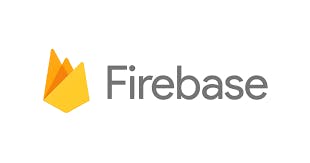Introduction
In the dynamic realm of app development, delivering seamless user experiences while managing the intricacies of backend infrastructure can be a formidable challenge. Enter Firebase, a comprehensive platform developed by Google that has redefined the way developers approach building web and mobile applications. With its array of services designed to simplify backend tasks and enhance user engagement, Firebase has emerged as a game-changer in the developer community. This article serves as a comprehensive introduction to Firebase, shedding light on its core features and benefits.

What is Firebase?
Firebase is a Backend-as-a-Service (BaaS) platform that offers an integrated suite of tools and services aimed at alleviating the complexities associated with backend development. It provides developers with a range of functionalities, from real-time database management to cloud storage and authentication, all of which enable the creation of robust and feature-rich applications.
Key Features and Services
Real-time Database: Firebase's real-time database feature enables developers to create apps that respond to data changes in real-time. This is particularly beneficial for applications requiring live updates, such as messaging platforms or collaborative tools. The real-time database synchronizes data across devices seamlessly, creating a smooth user experience.
Authentication Services: Firebase simplifies user authentication by offering built-in authentication methods. Developers can effortlessly integrate features like email and password login, social media authentication, and single sign-on (SSO) mechanisms. This eliminates the need to create intricate authentication systems from scratch, saving time and effort.
Cloud Firestore: Firestore is Firebase's next-generation cloud-native NoSQL database. It allows developers to structure data, make efficient queries, and retrieve data seamlessly. Firestore's real-time synchronization ensures that app data remains up-to-date across devices, making it an ideal choice for applications with complex data needs.
Cloud Functions: Firebase's Cloud Functions enable developers to execute custom code in response to events that occur within the Firebase ecosystem. This serverless approach streamlines tasks such as sending notifications, processing payments, and data validation, all without the need to manage a separate server infrastructure.
Cloud Storage: Firebase provides scalable and secure cloud storage for user-generated content. Whether it's images, videos, or documents, Firebase Cloud Storage ensures that data is readily accessible and optimized for fast delivery to users.
Hosting: Firebase Hosting simplifies the process of deploying web apps. With features like SSL certification, custom domain support, and content delivery optimization, developers can focus on delivering a polished user experience without getting bogged down in server configuration details.
Machine Learning Integration: Firebase's ML Kit empowers developers to integrate machine learning capabilities into their apps with ease. Whether it's image recognition, language translation, or text recognition, ML Kit opens the door to a wide range of AI-driven features.
Analytics and Performance Monitoring: Firebase Analytics provides valuable insights into user behavior and app performance. Performance Monitoring helps identify bottlenecks and issues that impact user experience, allowing for swift resolution.

Getting Started with Firebase
Creating a Project: Begin by creating a Firebase project through the Firebase Console. This project will serve as the foundation for your app's backend services.
SDK Integration: Firebase offers SDKs for various platforms like Android, iOS, and web. Integrate the relevant SDK into your app to access Firebase services programmatically.
Database Structure: Plan your database structure carefully, whether you're using the real-time database or Firestore. An organized structure ensures efficient data retrieval and manipulation.
Authentication Setup: Implement Firebase authentication to handle user registration and login securely. The platform provides user interface components to facilitate this process.
Real-time Capabilities: Leverage Firebase's real-time capabilities to create features that require instant updates. Set up listeners to keep app data synchronized across devices in real-time.
Conclusion
Firebase has ushered in a new era of app development by offering a unified platform that simplifies backend complexities while enhancing user experiences. Its diverse set of services, from real-time database synchronization to authentication and analytics, empowers developers to focus on creating innovative and user-centric applications. Whether you're an indie developer crafting a startup app or part of a large team working on an enterprise solution, Firebase's capabilities can streamline your development process and enable you to deliver high-quality applications with efficiency and confidence. Embrace the power of Firebase and embark on a journey of creating exceptional apps that captivate users and stand out in the competitive digital landscape.
